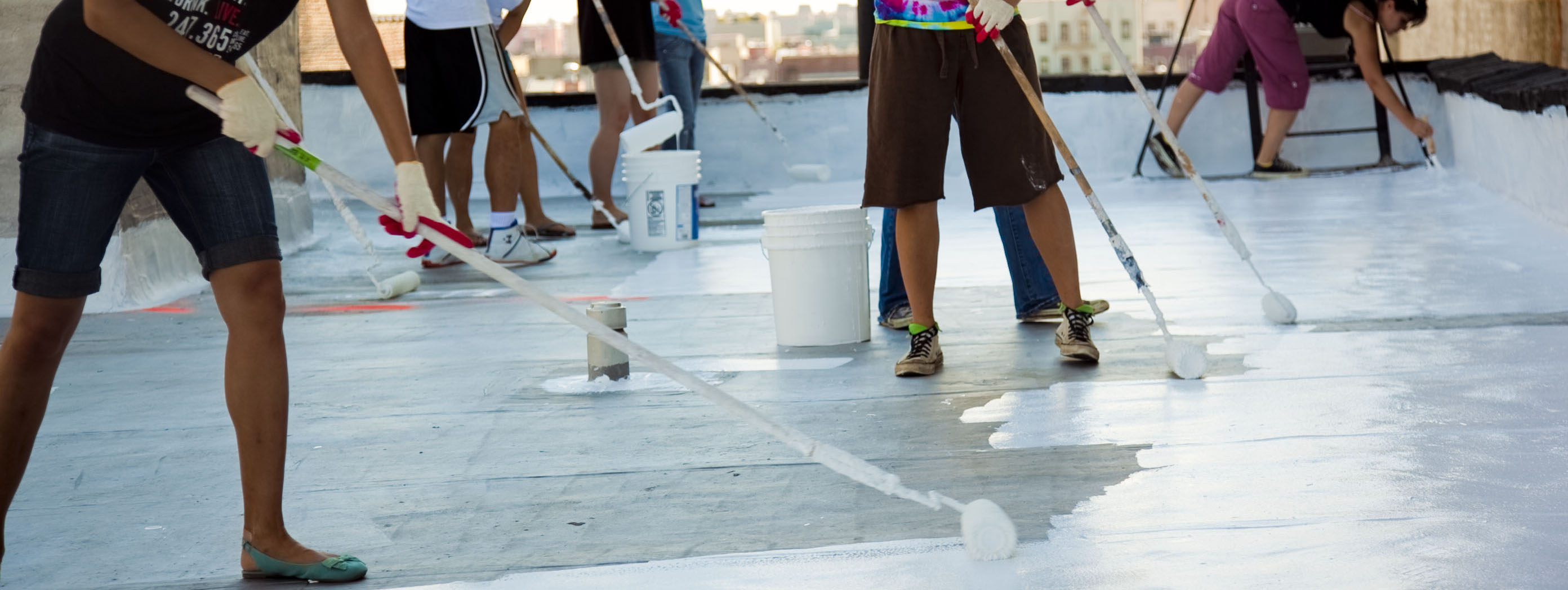TPO, which stands for thermoplastic polyolefin, is a type of roofing material for commercial buildings. It has been increasing in popularity due to its affordability, durability against harsh weather conditions, and reflective properties. TPO’s reflectivity reduces heat buildup and saves the owner on energy costs.
What Is TPO?
TPO is not actually a plastic, despite its name. It’s actually a type of rubber, which covers a roof’s surface in a single-ply membrane. It’s a material used for flat roofs and began to be used in the roofing industry during the 1980s. Prior to that, the material had been used as a protective surface by the automotive industry. It wasn’t as widely used until the 1990s when it gained popularity among building owners.

Benefits of TPO Roofing
There are many reasons why building owners choose to install TPO roofing instead of traditional roofing materials on their commercial buildings.
Cost
For a roofing material, TPO is very inexpensive. In fact, it’s one of the least expensive materials available for a roof. TPO roofing, on average, costs between $5.50 and $8.50 per square foot, including both materials and installation. The cost can vary, depending on whether there are old materials that need to be removed and disposed of first.
Installation Flexibility
Another advantage of installing TPO roofing is that there is a lot of flexibility with exactly how the material is affixed to your roof. It can be attached directly to the roof, fastened with adhesives, or even heat-welded. Heat-welding can be particularly useful around roof protrusions such as chimneys and skylights.
Durability
TPO is a very durable material. It doesn’t have to be pressure-washed, it is resistant to mold and mildew, and won’t easily corrode or break down. TPO roofs can also last up to twenty years before needing to be replaced.
Color
The color of a TPO roof is white, which is very reflective. This prevents heat buildup in the building underneath. This improves the energy efficiency of the building, allowing the owners to save money on utilities. TPO can also come in a reflective black or gray.

Waterproof
A TPO roof is leak-free and waterproof. Its seams are welded with hot air, which renders the material 100% resistant to the penetration of water.
How Long Does a TPO Roof Last?
A TPO roof lasts between fifteen and twenty years before it will need to be replaced. While this isn’t as long-lasting as other materials, such as tile, a TPO roof is also much less expensive to install.
Considerations of TPO Roofing
Despite all of the advantages of TPO roofing, there are some disadvantages, but you can avoid them by doing your homework ahead of time.
Different Materials from Different Manufacturers
While some TPO manufacturers make their TPO very high quality, others do not. In addition, the TPO may cost the same amount, regardless of the quality. Poor-quality TPO can be avoided just by doing your research ahead of time and making sure that you purchase from a reputable manufacturer.
The top layer of TPO is always laminated which can introduce places prone to cracking and deterioration relatively quickly in the lifespan of the material. Therefore, it’s essential to research ahead of time and read reviews of any manufacturer before purchasing TPO.
Thicker TPO Isn’t Necessarily Better
Another complicating factor is that different manufacturers make their TPO at different thicknesses. While some believe that thicker TPO is more durable, that’s not necessarily the case. No matter how thick the TPO is, the materials all wear out at the same rate.
Sold in Small Rolls
TPO is sold in smaller rolls, usually about 6 to 8 feet of material per roll. To cover an entire roof would take a lot of rolls and many potential points of failure where water could possibly leak in as the membrane contracts and expands over time.
What Type of Roof Works Best with TPO?
The best types of roofs for TPO are flat or very low-slope roofs. Most traditional roofing materials are designed to work with the slope of the roof to prevent leaks, but when the roof is flat, they don’t work as well, making TPO an optimal material for a flat roof. It is possible for TPO to be used on a pitched roof, but the price will increase with the increased pitch.

Can a TPO Roof Be Painted?
If you’d prefer a different color for your TPO roof, you can paint it, provided you use the correct type of paint. You’d need to use a water-based primer and an acrylic resin emulsion paint. It’s important to purchase the right type of paint because the wrong kind can react with the materials in the TPO and cause it to deteriorate. Acrylic resin emulsion paint doesn’t react at all with TPO and is therefore safe to use.


 “Francisco is an amazing contractor and his company and crews are just as good. Had to opportunity to experience his work at home in Windermere and the office building in Altamonte Springs. Both flooring and tile work were fantastic. Helped with selection and got job done quickly.”
“Francisco is an amazing contractor and his company and crews are just as good. Had to opportunity to experience his work at home in Windermere and the office building in Altamonte Springs. Both flooring and tile work were fantastic. Helped with selection and got job done quickly.”